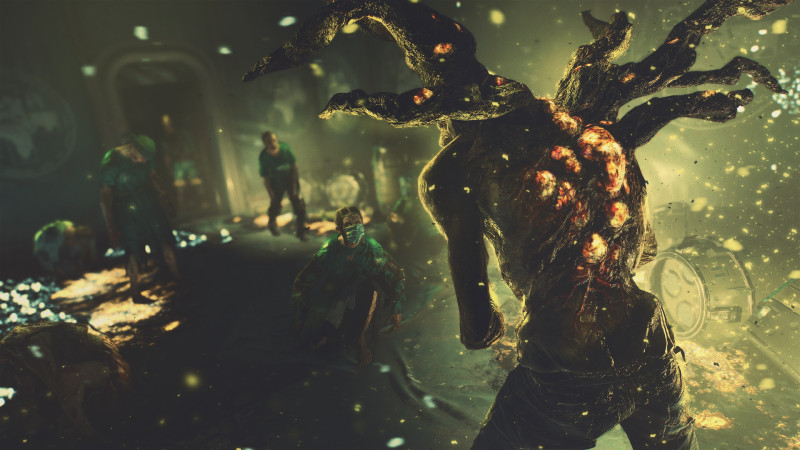
Dying Light 2 has been one of my most anticipated games of the year for, well, three years now. It all started in 2019 when I saw a beyond-impressive gameplay demo at E3. The game, then scheduled for a 2020 release, blew away my already-high expectations. I enjoyed the original Dying Light, but felt that with a little bit of iteration and polish, the series could evolve into something truly special. Those hopes were delivered upon during that E3 2019 demo, and Dying Light 2 skyrocketed up my list of the most anticipated games of 2020.
Sadly, in the early stages of last year, Techland announced a delay to 2021. Then, after announcing a December 2021 release date, the developer delayed the game one (hopefully) final time, with the title now scheduled to release on February 4, 2022. It's been a long time coming, but more than two years after that initial gameplay demo impressed me, I finally got my hands on Dying Light 2 Stay Human.
The demo I played at a small in-person event in San Francisco gave me nearly four hours of story and side content to experience on a modern, high-end gaming PC, as well as some extra time on an earlier build running on a PlayStation 4 Pro. While you can check out my general impressions and some of my captured footage from the PC version on today's episode of New Gameplay Today, I've distilled some of my key takeaways below.
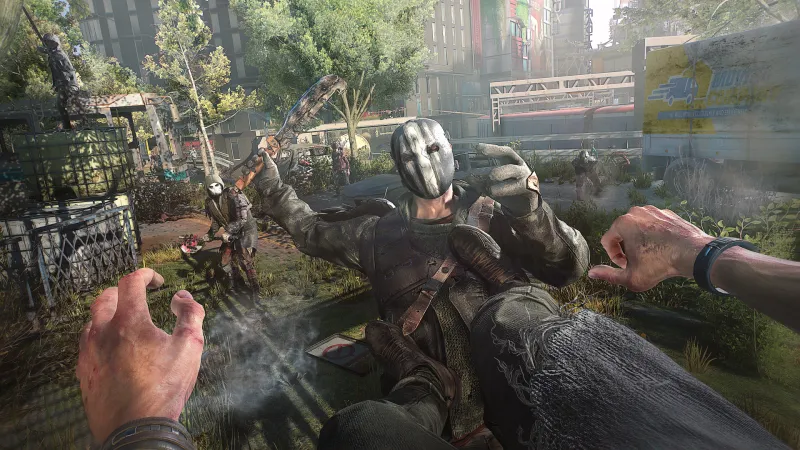
Parkour and Combat Are Better Than Ever
With new mechanics, rebuilt systems, and a ton of additional animations, the combat and parkour of Dying Light 2 Stay Human expand on the already fun versions present in the first game. Dying Light 2 protagonist Aiden Caldwell has a better move set than Dying Light's Kyle Crane, but much of it has to be unlocked through the game's skill tree. While I barely scratched the surface of the parkour and combat skill trees, I did unlock moves like wall-running and drop-kicks, both of which greatly enhanced my experience.
Parkour has received perhaps the most noticeable upgrade. In previous footage, Techland showed off moves like riding on doors as they open, using zombies as cushions when you fall from tall heights, and grappling hooks. While I didn't get a chance to use any of those in my demo, the improvements to the parkour system in Dying Light 2 are evident.
To support the enhanced parkour systems, Techland doubled the number of moves available to the player and implemented more than 3,000 animations to deal with all the moves, combinations, and interactions with objects. Not only that, but the team rigorously iterated to ensure that the first-person platforming (which is a unique challenge) feels smooth, rewarding, and precise.
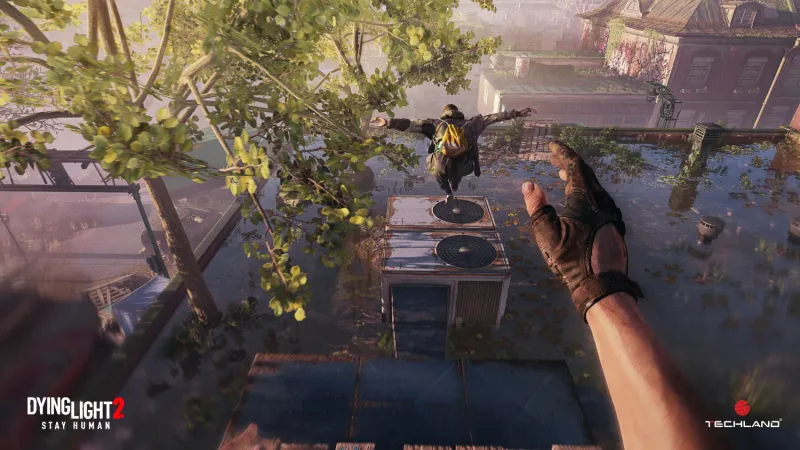
"One of our goals was to create a parkour system that would be easy to get into," lead game designer Tymon Smektała says. "When you come to think of it, parkour – especially in [first-person] – is a very complex mechanic. It's not the simple thing of you pressing a button and swinging a weapon; you have to measure distance, you have to time your presses right. You don't see the character, but you have to imagine where the character is and how it moves. It's a very complex mechanic."
Techland wanted to create a parkour system that is approachable for a wide net of players, yet difficult to master. Through things like timed parkour challenges, players can push the system to the limit, but Dying Light 2's parkour is aimed at giving players an approachable set of moves and enabling them to get better.
Combat may be a more straightforward mechanic in a first-person game, but Techland has also made marked improvements on that front. While stealth is an option in several cases (I quietly worked my way through one base, similar to how you would in a Far Cry game), combat has been overhauled to make sure weapons feel truer to their weight and power. I experienced this in full force as I charged up a swing with a two-handed mace, then unloaded on a zombie, sending it flying through the air in full, rag-doll glory. Combat also takes into account dodging, blocking, and parrying, but you have to be careful not to deplete your stamina bar.
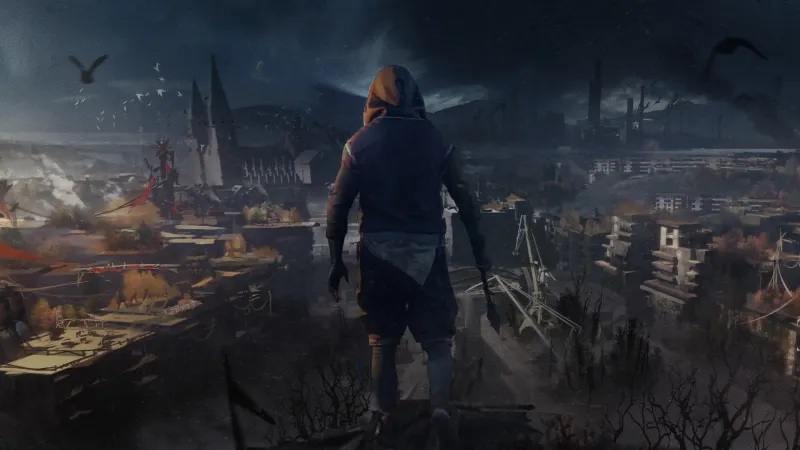
Your Choices Truly Do Matter
In my initial preview of Dying Light 2 from E3 2019, I gave my write-up the headline of "Choice and Consequence is Everything." That notion was further confirmed through my first hands-on session with the game last week. Throughout the story content, I not only decided with whom I wanted to align myself but also which benefits I wanted to confer upon the city. While I didn't affect the city in the sweeping kind of ways I witnessed in that 2019 demo, in which an entirely new area was made accessible and a new zombie type emerged from a newly uncovered lakebed, my character had a refreshing amount of say in the way both the story and city progress.
According to Smektała, this was a directive delivered straight from creative director Adrian Ciszewski as the team began work on Dying Light 2. Ciszewski, who also served as a director on the original Dying Light, noted that the game delivered players the tools and moves to approach in-game obstacles how they want using the parkour and combat mechanics. However, once players started interacting with the story, it was scripted and rigid, not allowing players to make much impact on how things actually played out.
"Our goal for the second game is to try to give players the same amount of freedom in the story that they have in the gameplay," Smektała says. "Of course, it's a different beast with the narrative; you are always limited to branching narratives, but we took on that challenge, and we really tried hard to do that. I think we have achieved that, and we did a little bit more than just branching narratives."
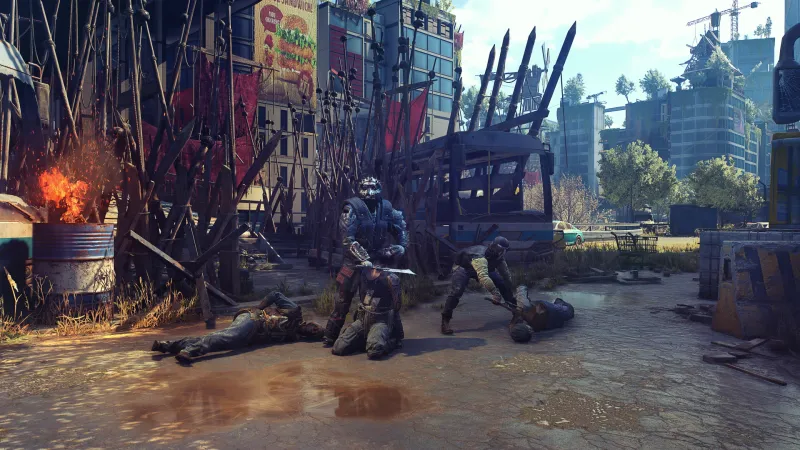
To achieve this, Techland instilled choice and consequence that work on three levels. The first level, according to Smektała, consists of all the major decisions you make in the main story. These decisions have an impact on the world, city, and characters, changing the very course of the narrative. I don't want to spoil anything for the main story, but I witnessed this firsthand as I followed one questline through all the way to the end, opting to side completely with one of the main characters I encountered, bringing their arc to what feels like a satisfying conclusion.
The second level stems from the side content, where you make decisions with characters and you will later notice something related to that choice in the future; Smektała gives the example of an opera singer you can choose to help, and if you do, she'll appear in one of The City's hubs, singing arias.
The final layer of choices comes into play with the city alignment mechanics. Based on the choices you make, you align your interests with those of one of the factions that inhabit The City. The two factions prominently featured in my demo were the Survivors, a group of characters just trying to rebuild civilization, and the Peacekeepers, a well-armed militia that uses blunt force over strategy. In my playthrough, I sided with the Survivors, which changed the alignment of that district to give them more control. In doing so, I opened up more ziplines throughout that area of The City, giving me more traversal options for when I don't feel like descending into the zombie-infested streets. Had I sided with the Peacekeepers, I would have unlocked car traps for helping to control the hordes, a less elegant solution than the ziplines, but still useful.
According to Techland, players will need to weigh the benefits in each district as they make their decisions. There are seven zones in which you can make these decisions, and there are seven levels of different rewards for each faction. As you continue to align with one, you can unlock more benefits with them, while making choices to align with the other will unlock benefits for that faction. The result is a city that is reactive to your various choices, even when you're acting outside of the main narrative.
Of course, many of the most satisfying choices in any game is in how you develop your character. While I can't say too much about the skill tree, Dying Light 2 gives you multiple skill trees to develop based on the play style you want to use. In addition, you can gather a kind of collectible through exploration that allows you to upgrade either your health or stamina.

Dying Light 2's Story and Characters Are More Memorable
In 2015's Dying Light, you explored the city of Harran as Kyle Crane. Throughout the narrative, you encounter several important characters and help them accomplish their goals, but even after multiple playthroughs, many of those characters and plot points escape me. That's because, while Dying Light was an exciting and fun adventure, the characters felt more like props in the world rather than living, breathing people.
Based on my time in Dying Light 2, the story and characters therein are yet another area of improvement. My favorite character I encountered was Sophie, the daughter of the former leader of the Survivors. She's hard-nosed and battle-worn, but her plight is relatable, and she has a soft spot for those she cares about, even if they're dangerously flawed. Her storyline focuses on her coming to terms with her responsibilities and her past in order to ascend to a leadership role within her people.
With relatable characters, all of whom are convinced their way is the way to do things, navigating the decisions and aligning with the characters of Dying Light 2 can feel all the more gut-wrenching. However, the most striking part of the narrative is how much more personal protagonist Aiden Caldwell's story is in Dying Light 2.
"The central question of the whole game is about who Aiden really is," narrative director Piotr Szymanek says. "That's the question that he asked himself: Why is he so skilled? Why is he stronger than other people? Why can he do what no one else can? He thinks that the answer to this question is his sister, whom he remembers from the past. During the past years, he was looking for her and suddenly he finds the trace of her in this village in The City where Dying Light 2 Stay Human takes place."
Of course, it can't be that easy, so Aiden must work with factions within The City to gain additional access and eventually reach the Central Loop district so he can learn more.
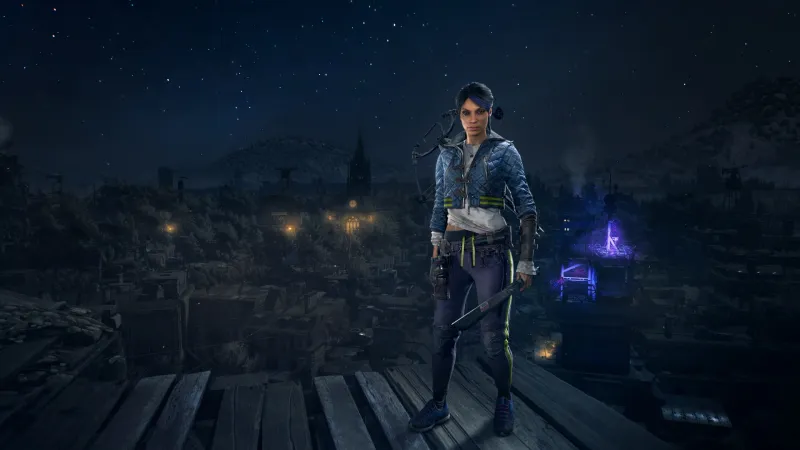
Rosario Dawson's Lawan Looks Like An Important Character
In my playthrough, I managed to escape Old Villedor, the area in which my demo started. From there, I entered Central Loop, where I met Lawan. Gamers are no stranger to celebrity cameos in games, but they can sometimes feel phoned in or fleeting. While I was only able to hang out with Lawan for about 30 minutes before my time with the PC build came to an end, Dying Light 2 sets her up as a major character who receives a spirited performance from actress Rosario Dawson (The Mandalorian, Daredevil).
"She's been through a lot," Szymanek says. "She knows everyone in Central Loop and everyone knows her. Nobody wants to be on her kill list. She has a list of bastards she wants to get rid of, but by making your choices, you can influence her storyline. Maybe she will finish as a badass at the very end or maybe she will somehow change and she will influence you as the player as well."
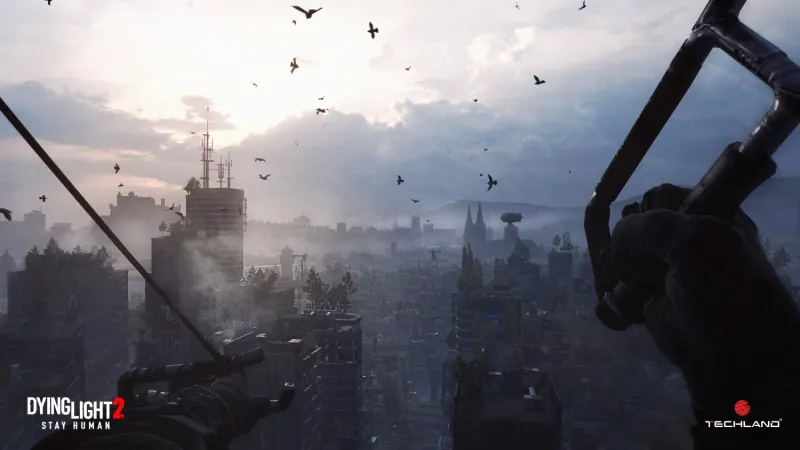
Not only that, but she gives Aiden his paraglider, which opens up a host of new traversal options. On top of the slow glide to the ground, the paraglider can also use heat vents to push Aiden back up, letting him reach higher points with the glider and extend his glide time. You have to be careful when using it, though, because if your stamina bar runs out while paragliding, you can lose control of it.
Of course, having Rosario Dawson adds a special element to the character. While she's hardly a stranger to video games, having provided her voice to games like NBA 2K20, Dishonored 2, and Ratchet & Clank, Dawson is certainly more well known for her roles in film and television.
"It was really challenging and fascinating at the same time," Szymanek says. "What I did was watch all her movies and I was analyzing the movie clips with her, analyzing how she speaks, how she behaves, what's her temper, et cetera. And then, having her voice in my head, I started to write her character."
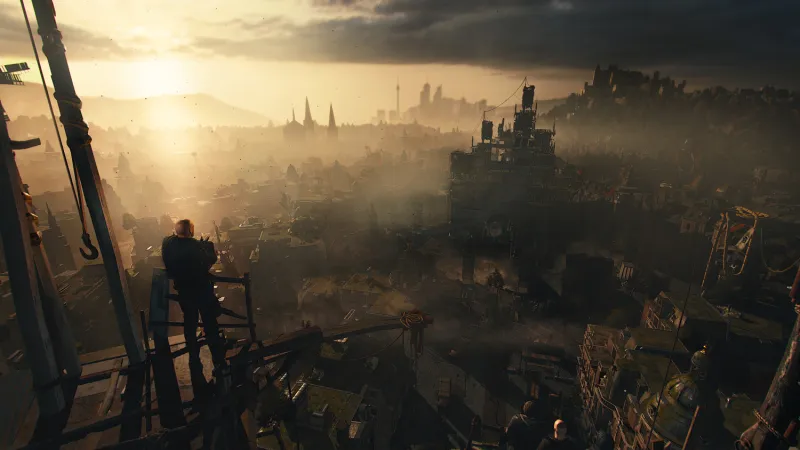
The World Reaches New Heights
The world may be decaying as the dead roam the streets, but The City of Dying Light 2 feels more alive than its predecessor. Not only do the aforementioned memorable characters make you feel more at home in the sequel's world, but there's much more to do in the two districts – Old Villedor and Central Loop – I visited. You can participate in unique, story-driven side content delivered by the vast array of quest-givers, activate windmills to open up new settlements (of which there are between 30 and 40) within the metropolis, or even delve into infested areas to grab precious loot.
The City, which replaces Harran from 2015's Dying Light as the setting, is also much more built-up than the debut game. In the first game, players spent the majority of the first act in The Slums, an area consisting of smaller, makeshift buildings, before journeying into Old Town, where buildings were more sophisticated but still typically only reached a few stories tall. In Dying Light 2, my starting area of Old Villedor consisted of buildings that are five stories or so, while the second area I went to, Central Loop, had me navigating through skyscrapers.
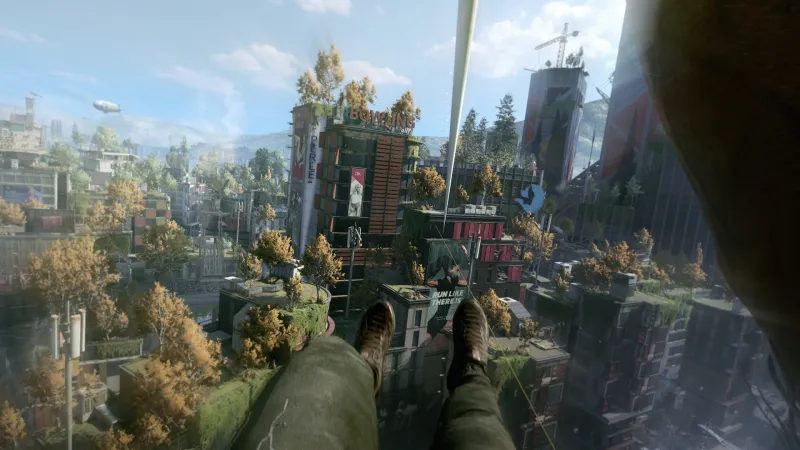
"All of [the regions] are basically us continuing the evolution of parkour from the first game," Smektała says. "Our idea was to keep adding to the verticality to keep adding to the layers of the world that you can discover."
There are also small touches, like the ability to sit at campfires and regenerate health as you listen to stories from characters trying to stay alive in the world. It's something that's low-impact, but when you're in desperate need of a health boost, Dying Light 2 incentivizes players to take in the lore of the world through NPC interactions such as these.
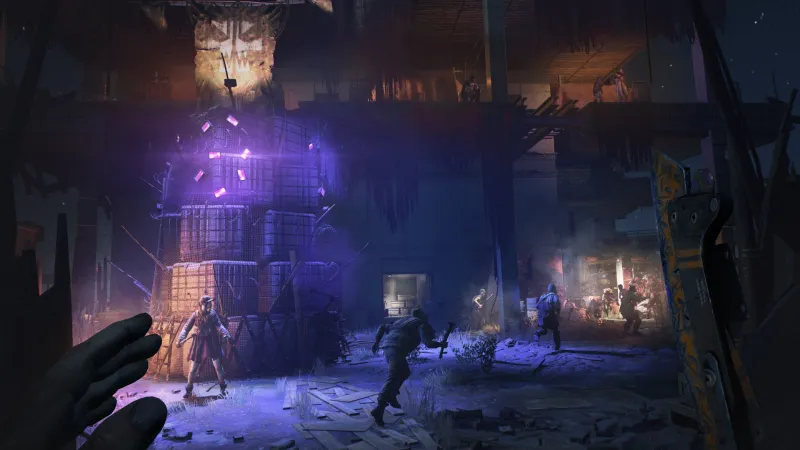
More Reasons To Go Out At Night
The first Dying Light introduced players to the idea that going out at night can be rewarding but also super dangerous. Not only is visibility decreased, making it easier for enemies to sneak up on you, but special zombie types come out when the sun sets. However, Techland noticed that players too frequently didn't take advantage of the extra experience points nighttime exploration conferred on them and often skipped to morning before venturing out.
While players didn't fully take advantage of the incentive in the first game, Techland built the world of Dying Light 2 to push players to come out at night. If you go into an abandoned store or quarantine zone during the day, it is flooded with active and athletic zombies. However, if you brave the nighttime streets and return to those same buildings after sunset, the infected population is much sparser. This gives you a clearer path to loot valuables, which include crafting parts, weapon mods, and the inhibitors that grant you extra stamina or health.

As with the first game, special zombie variants lurk in the shadows, and when the sun goes down, they spill into the streets. Players can expect many of the special variants from the first game to return to the hunt in Dying Light 2, but Techland has also added new special types. Smektała's favorite addition to the bestiary is the Banshee, which is a very quick character that jumps from one rooftop to another, making her difficult to track, then when she jumps to the ground, she'll run at you with her claws dragging behind her with sparks flying.
However, even beyond the special zombie types, you need to be even more careful when going into the darkness, as Aiden can succumb to an illness if he's out of the light for too long. He can eat a special kind of mushroom to prolong waning immunity or upgrade the length of his immunity through character progression, but even if there are no zombies around, you don't want to waste time.
"We wanted this to be a metaphor for diving into the sea to get treasures from the bottom," Smektała says. "We kind of treated the dark places like this: You have a specific amount of immunity, which is kind of like your oxygen, and you dive into the dark place and try to get as much out of it as possible until your oxygen – your immunity – depletes."
If this sounds stressful, that's because that's how it's designed. Thankfully, you can approach many of the missions whenever you want to, but some missions require you to brave the darkness, so don't breathe too big of a relieved sigh just yet.

It Runs Well On PS4 Pro
In 2020, it's hard to argue against the notion that Cyberpunk 2077 was the most anticipated release of the year. Unfortunately, the launch of CD Projekt Red's massively hyped game was marred by glitches and poor performance, particularly on last-gen consoles. While Techland isn't making any kind of comparison or contrast to its Polish compatriots at CD Projekt, it seems as though the Dying Light 2 Stay Human team wants to reassure players that even though the game is coming to current-gen consoles, it still runs well on last-gen systems.
As I mentioned earlier, the bulk of my time with Dying Light 2 was spent on a modern, high-end PC. However, following the conclusion of my main gameplay session, I was able to experience Dying Light 2's PlayStation 4 version, running on a PlayStation 4 Pro console. The PS4 build I played did not have missions or characters to interact with; instead, I was given a big area of Old Villedor to explore, parkour, and fight my way through.
The biggest difference between the PS4 version I played and the PC version is the frame rate. The PC version reached 60 frames-per-second performance, while the PS4 Pro was delivering 30 FPS. The textures also looked slightly muddier compared to the PC, and I noticed a tiny bit more pop-in within the environment. Unfortunately, I was unable to experience the game on a base PS4 or Xbox One, so I can't speak to how well the game runs on the standard versions of the last-gen consoles. Still, despite being an older build than what I played on PC, the smaller slice of gameplay I experienced on PS4 Pro made me feel more confident in how Dying Light 2 will perform on older systems.
For more on Dying Light 2 Stay Human, check out our">https://www.gameinformer.com/preview/2021/11/16/dying-light-2-stay-huma… episode of New Gameplay Today, as well as our">https://www.gameinformer.com/product/dying-light-2-stay-human">our coverage hub for the game. Dying Light 2 Stay Human launches on PlayStation 5, Xbox Series X/S, PlayStation 4, Xbox One, Switch (via the cloud), and PC on February 4.
No comments:
Post a Comment